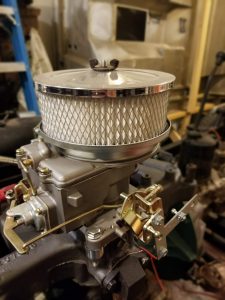Three Reasons You May Not Want To Convert To A Roth IRA

Photo credit: jb
There’s been a lot of press surrounding the concept of Roth IRA conversions, specifically in the coming 5-6 years with our historically-low income tax rate structure. Given the low tax rates presently, and the presumed increased tax rates after the expiration of the current tables after 2025, a Roth Conversion may make a lot of sense for a lot of folks these days. However, there are a few reasons why this might not be the best idea for a lot of folks. Here are three really good reasons why you probably should reconsider…
Three Reasons You May Not Want to Convert to a Roth IRA
-
- “Same as it ever was…” Several factors must be considered when determining if a Roth conversion makes sense for you:
- your conversion tax rate
- the amount that you withdraw from the Roth account (after conversions)
- the date that you begin withdrawing that amount from the Roth account
If you would have begun taking the withdrawals on the same date (C) regardless of the account (traditional or Roth), in the same net (after tax) amount (B), and the tax rate at that time is the same as your conversion rate (A), and your investments returned the same rate – assuming your earnings would be the same either way – there is no advantage to the Roth conversion.
In order for there to be a benefit to the conversion, one or more of the following must happen:
- the date you begin taking distributions must be later;
- the amount you would take as a distribution must be less (considering the tax already paid); and/or
- the tax you pay on the distribution would have been higher than the conversion rate.
So, if the tax rates increase as we assume they will, it can make sense, but only if your conversion rate is less than the rate you might pay in the future. For example, if you converted $100,000 in 2020, at a marginal tax rate of 32% (due to your other income), your conversion has cost 32%. If you would otherwise take distributions from your traditional IRA in smaller increments such that the marginal rate on the distributions was only 25%, you’re losing $7,000 by converting. If the future tax rate turns out to be more than the conversion tax rate (for example, 35%), then it is in your favor to convert (per the example).
- A downward spiral. If the value of the investments in the account actually reduce in value, or if the tax rates decline, you’ll be in a worse position if you convert to a Roth IRA.For example, if your IRA was worth $100,000 when you converted it, if your tax rate was 25% the tax cost of the conversion is $25,000. If the value of the account subsequently falls to $50,000 – now the overall rate that the conversion cost you has inflated to 33%. By the same token, if (heaven forbid) the tax rates are lower in the future, it doesn’t make any sense for you to do a Roth conversion. The more likely event is that your personal tax rate might be a lot less – especially possible if in retirement you have a pretty low-cost lifestyle with few fixed resources like a pension.
- The game changes. What happens to you if Congress decides that this Roth deal is just too good? Maybe they’ll start requiring distributions of the original account owner – or restrict the amount of time that your heirs can stretch payments (this one is actually pretty much a foregone conclusion)? It’s really impossible to guess what Congress might do – but given the potential cost of lost tax revenues from Roth accounts, it’s not hard to believe that the rules could be changed to have a negative impact on your converted account.
- “Same as it ever was…” Several factors must be considered when determining if a Roth conversion makes sense for you:
Of course, this is not an exhaustive list – just a few good reasons why you really need to think this over before you do a Roth conversion. In general, if you can convert funds from traditional IRAs to Roth IRAs at a marginal rate of 24% or less, it’s likely a good idea to do this, for at least part of your traditional IRAs.
In addition, if it is your intention to never distribute a significant portion of these retirement funds, converting to Roth can make good sense. This is especially true if there will be a very long period of time for the converted money to grow from investments. If you plan on living a long time (and don’t need the money from the IRAs), a Roth Conversion might be a good plan for you.
You must be mindful, if nearing the age for Medicare (or already participating in Medicare), is that a Roth Conversion could temporarily make you subject to an IRMAA (Income-Related Monthly Adjustment Amount) increase to your Medicare Part B and Part D premiums. These adjustments occur based on your AGI from two years previous to the current year, so a large Roth Conversion at any time during or after your 63rd year could cause IRMAA Part B & Part D increase. Also, keep in mind the additional Net Investment Income Tax that may apply if your overall AGI is greater than $250,000 for a married couple.
Disclosure: None.



